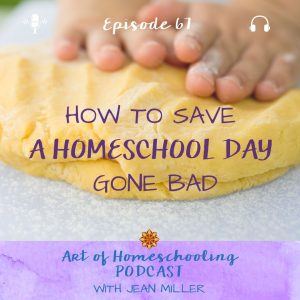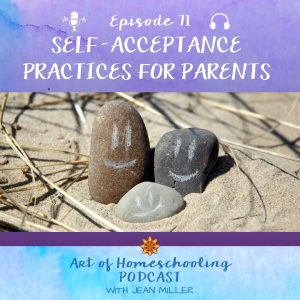Are you wondering what homeschooling high school looks like for a Waldorf family? Today, I want to share what it looked like for me and my three children. My youngest is now a freshman in college. That makes my husband and I officially empty-nesters this year. A good time to reflect back on those high school years.

I want to start off with a quote from Rudolf Steiner, the founder of Waldorf education. Steiner said, “Every education is self-education.”
Essentially, there is no education other than self- education, whatever the level may be… Every education is self-education, and as teachers we can only provide the environment for children’s self-education. We have to provide the most favourable conditions where, through our agency, children can educate themselves according to their own destinies. -Rudolf Steiner
Does this quote surprise you?
It does me! Because truth be told, the Waldorf approach appears to be very teacher-directed especially when compared to other methods.
There are so many components that a Waldorf teacher or homeschooler needs to prepare. As homeschooling parents, we try so hard to get it right – planning and teaching our children in main lesson blocks, as well as planning for recorder lessons, drawing and painting, movement and music and verse recitation…and on and on.
And so when I read this quote, I find it a real challenge to comprehend that a Waldorf teacher’s main job is preparing the environment. While turning the responsibility for learning over to the child!
Not how I would describe Waldorf.
But, this is what Steiner had in mind when creating the Waldorf method!
If you want to read more about this, check out my post How Do We Nurture Independent Learning in Homeschooling?
Steiner saw the teen years as a time for seeking true knowledge – both knowledge of the self and of the world. A time for children to learn to love themselves, each other, and the world around them. We want them to feel engaged and enthusiastic about the world.
At this stage of our child’s development, our job becomes one of facilitator. There are so many different ways to accomplish this. Here are some ideas from my years of homeschooling high school.
What Does Homeschooling High School Look Like with Waldorf?
A good place to start is considering how we can keep Waldorf principles alive in high school.
- Continue teaching a few main lesson blocks. This doesn’t have to be for every subject, but designing some interdisciplinary blocks that combine say literature and history, or art and science are really fun and appealing for teens. History through Drama, Rivers of the World, Revolutions. For ideas for blocks, check out the curriculum of some established Waldorf High School’s websites: the Austin Waldorf School or the High Mowing School.
- Be sure to integrate art into all the subjects in addition to bringing in direct instruction in art and handcrafting skills. Continue to weave the lively arts into your subjects, balancing the academic with artistic and practical activities. (Not familiar with the lively arts? Check out The Seven Lively Arts here.)
- To the extent that you are doing the facilitating, try to keep the two-day rhythm of encountering new material one day, recalling and integrating the next. You don’t need to do all the presenting like in the earlier years because high schoolers can do much of their work independently. But be sure to engage in conversations regularly about their learning to help them review and integrate.
- Do not overload your teens with too much coursework from textbooks. This can be both dry and exhausting. Do not fall prey to a strictly fact-based approach that is overly-intellectualized either.
- As best you can, continue with the principle of “the experience before the explanation.” And instead of you providing the explanation, your teen can now begin to discover this on his or her own.
- Remember that humans are the best teachers. And in fact, most teenagers benefit from interacting with others while learning, so look for opportunities for small group learning.
How Does Homeschooling High School Even Work?
Before we go on to explore what this might look like day to day, let’s back up a moment to consider how homeschooling high school even works.
Just like in a brick and mortar school, a homeschooled high school student earns credits for different subjects. The desired end result is a transcript representing four years of high school courses. I like this as the end goal no matter what a child might choose to do after high school.
In order for your child to complete high school requirements, you can either enroll them in an umbrella school, or design your own curriculum.
Some umbrella schools such as the Clonlara School or NARHS (the North Atlantic Regional High School) still allow you to choose your own curriculum. In these umbrella schools, you work with a counselor on requirements for earning credits and they give your child a transcript and diploma at the end of their four years.
The other option is to piece the curriculum together yourself and create your own transcript. This is the route we chose as a homeschooling family.
For the high school years, we as the homeschooling parent transition into facilitator rather than main teacher. Our job, as I see it, is to look at each subject area with our child and figure out how we want to help them fulfill the work to earn credit in that subject.
In high school, whether it be Waldorf or public private, subjects are taught by specialty teachers who are experts in their field. As homeschoolers, this is a time for us to begin to look beyond the family and find learning opportunities out in the community.
In order to look at the high school years, subject by subject, it helps to have an overview. I first reviewed our state requirements for graduation as a guideline. (You can easily do a search for high school graduation requirements for your state or country.) Technically, we didn’t have to fulfill these requirements as homeschoolers, but we wanted our transcripts to be somewhat equivalent to other institutions that conferred diplomas. We also looked at our local school district’s requirements for graduation.
When checking out these overviews, you’ll find that there is a total number of credits required (usually 20-25) as well as specific requirements such as 4 years of English and Math. As homeschoolers, we can then get creative within this framework. More on that in a minute.
Whatever your child might be interested in doing after high school, I find that the structure of graduation requirements to be a good guiding framework. Of my three children, two chose a traditional 4-year college or university, and one chose technical school to become a mechanic (his true passion). I will also add that my oldest chose to go to our local public high school while the other two chose to homeschool all the way through. And we used this general process for designing our high school experience for each of them.
Here’s a quick story about what happened with the technical school application process. At first, the school said that as a homeschooler, my son would have to take the GED (a test for the General Education Diploma). But once we sent in his transcript, they said, “Oh, never mind. This is fine.” He was then one of their star students. 🙂
In addition to the transcript, I wrote course descriptions for each of my homeschooled child’s classes. We also created a high school binder for each of them where we collected the course descriptions and work samples for their courses in each grade. My children never actually needed this binder to present to anyone in its entirety, but it helped to instill confidence (in me and my child) as well as provide a backup just in case.
I found the NAHRS book, High School Resource Advisor, invaluable for helping me to navigate all of this even though we never enrolled in NAHRS. It’s full of lots of examples of transcripts, documentation, and how to build a course around a child’s activities and interests.
If your child has the goal of attending college, here is what the application package generally consists of:
- Transcripts
- Course Descriptions (for kids who attend brick & mortar schools, colleges get these directly from the school)
- Student-written Essay
- Test Scores (ACT or SAT – although there are more and more test-optional schools)
- Letters of Recommendation
What does high school look like day-to-day for a Waldorf homeschooling family?
There are so many possibilities here! Create a main lesson block around the History of Poetry, or Shakespeare in the 21st Century. Explore Community College classes (but I suggest only one or two at first). Start an Academic Club yourself and invite teens to your house once a week for a Book Club or Geography Club or Movie Club. Invite a painting teacher to come instruct in painting animals during Biology class. And then ask your neighbor who’s a Veterinarian if your child can shadow her weekly for a few months as part of this Biology class.
Now, let’s get practical. Because for many of us, we fall prey to that little voice inside our heads that is saying, “Oh, High School! It’s time to get serious now.” And that can be a very dangerous little voice. Because we can suddenly turn into the taskmaster who nags at the child and forgets that learning is meant to be fun and interesting!
So, here’s a bit of the nitty gritty.
There are three ways to earn credit for a course:
- Complete a textbook
- Count Hours
- Enroll in a Course
- Completing a Textbook that is grade appropriate for that subject is our least favorite approach. But we did use this option a few times. For example, we used an Oak Meadow curriculum package for Health that comes with a health textbook plus some readers. (One semester of Health is a state requirement & one we chose to fulfill.) We bought a few of the Great Courses that are both video and textbook based. We used textbooks for Math. (A note about Math: honestly, higher level math is really hard to learn on your own. I am not a Math person, so I couldn’t answer questions when my children got stumped and that would then often lead to frustration and falling way behind. We did much better for Math with either Thinkwell online or a Community College class that my children attended in person.)
- Counting Hours: we used the Carnegie Unit where 120 hours=one credit, so 60 hours=1/2 credit. You can decide how you want to count hours. I’ve seen as little as 80 hours=one credit. You get to choose, and then be sure to include this on your transcript. After you’ve decided, your child can simply keep track of his or her hours. This works great for subjects like English Language Arts, History, and lots of Electives where a child can count time reading, drafting and revising essays, going to plays or lectures, and working on research projects. Don’t worry if they get behind in recording their hours (it happens to everyone)! You can go back through calendars and estimate, then vow to be more consistent from now on!
- Enrolling in a Course: check out homeschooling groups in your area. If there are enough teens, homeschooling groups often hire a local teacher to teach a small group. This is a great introduction to group learning if your child has never “taken a class” before. You could even offer to teach a class to a small group yourself! Then there are classes at the local community college or state university that teenagers can take for dual credit. Every state in the U.S. has a dual credit program, which means that the student gets both high school and college credit for the class. Some local public high schools offer part-time enrollment or allow homeschoolers to just take one class.
I have a funny story to share about taking classes at the local public high school. Our next door neighbor worked for our local public school district and was asked to head up a Task Force on homeschooling. She asked me to participate. After we met for a few months, the district then published their homeschooling guidelines. (Note: in our state, the homeschooling regulations require us as parents to provide 900 hours of education per year to our homeschooled children.) When the district published their homeschooling guidelines, they stated that part-time classes taken at their high school could NOT be counted toward our 900 hours! I never did find out the logic behind this (or the politics), but I can assure you this was not one of the recommendations from the homeschoolers on the task force.
High school is a wonderful time to weave in your child’s interests as well. You can either turn them into a whole course (Musical Composition anyone? Or Engine Repair?) or include them as part of another course.
Remember to be creative and think outside the box. It’s not easy to set aside the way we ourselves were educated! But don’t let the regulations lock you into seeing the high school experience in a prescribed way.
Add in some group activities so that your child begins to experience group learning. Aside from classes, there are lots of other opportunities in the community that you may want to consider.
Another type of activity that my children enjoyed were competitions. Power of the Pen (in middle school), Mock Trial, Model UN, and Destination Imagination. In each of these competitions, you can organize a group of homeschooled students and enter as a team just like a school team would.
Don’t try to do too many of these at once, though. For the competitions, one per year was plenty.
Group learning is important for teenagers as they begin to form their view of the world, even if in small bits. Our different group experiences also included classes that I taught in our home. In History Through Film, we watched films that I selected and discussed them. Lots of popcorn and treats may have been part of the experience as well!
Want to read more about our high school days? Here are three posts that I’ve written over the past few years about A Homeschool Day in the Life with a teenager.
Homeschool Day in the Life with a Senior in High School
A Homeschool Day in the Life (with a 16-Year-Old)
A Homeschool Day in the Life with a 15-Year-Old
With high school being a mix of textbook learning, community college classes, small group homeschool classes, national contests & competitions, and individual learning, my high schooled children had a wonderful variety of learning experiences, settings, and subjects. Each year, we sat down together to look at each subject and talk through possible ways that they could earn credits.
Their transitions from homeschooling to college or technical school went quite smoothly as well. As I look back, I believe this was because of the variety of their experiences and their ability to learn in different settings. Couple that with the creative thinking and problem-solving that a Waldorf education gives and you have a formula for engaged learners.
Looking back at Steiner’s quote, “as teachers, we can only provide the environment for children’s education,” this couldn’t be more true than in high school. As parents, we continue to shape and influence our children’s activities, rhythm of the day, our relationships with them, and their attitudes toward life. But we are helping them to create the environment for their own learning.
Our child’s high school years also present us with the opportunity to branch out and embrace our own learning anew. As our children begin to expand their learning, we can embrace new activities and learning for ourselves.
Because for our teenagers as well as for ourselves, “all education is self-education.”
Looking for more support? I have a 3-lesson masterclass inside the Inspired at Home membership called Homeschooling High School. Membership is only $37/month – join anytime, cancel anytime. Over 15 masterclasses inside! Plus get coaching and planning support along the way.
What does homeschooling high school look like at your house?









Oh, thank you for this, Jean! It is just what I needed! ❤️
So happy to hear this will be helpful, Amber! The thought of high school seems daunting at first, but it can be so much fun! 🙂
Spectacular. An absolute gift of wisdom. Thank you!
I’m on round 2 with high school, and you are right – it can be so much fun!
Thanks, Penny! So great to be on this journey together.
Teenage Liberation Handbook by Llewellyn is also a great book!
YES! Thank you for that reminder, Barbara. Each of my children read that book in 8th or 9th or 10th grade and it really offers a refreshing perspective.